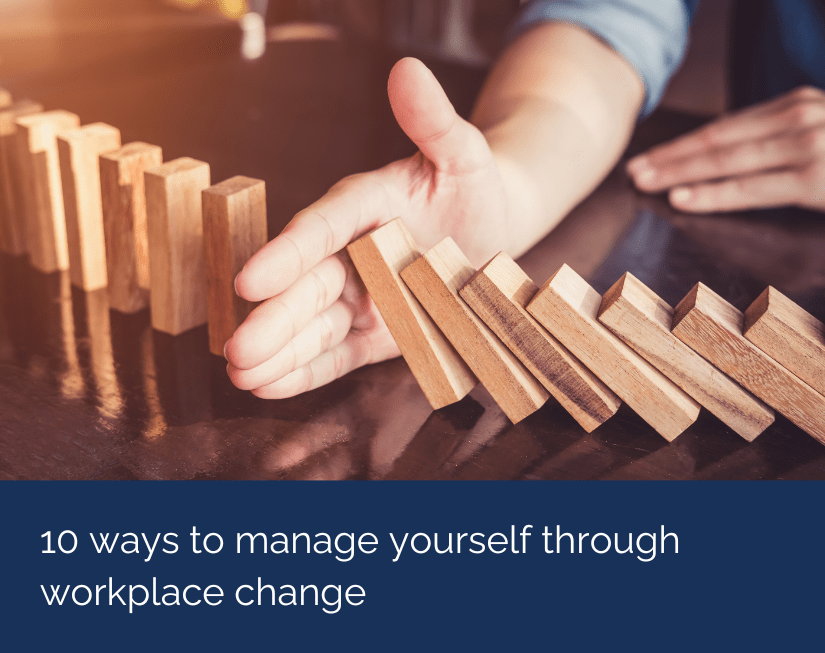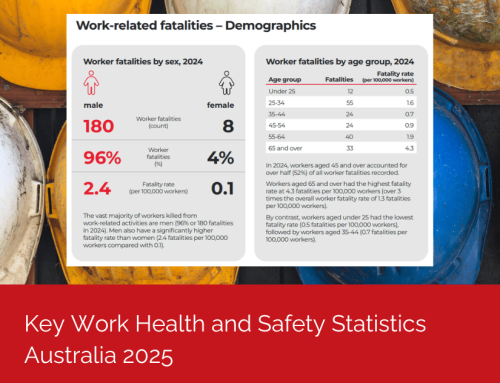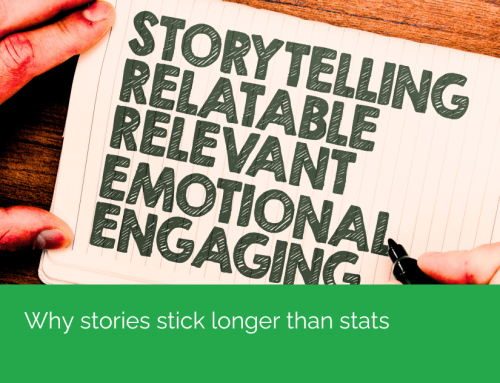
Change in the workplace is inevitable, but how you manage yourself through it can make all the difference. Find out how.
Whether it’s a restructure, new leadership, or evolving priorities, change can trigger uncertainty, resistance or even fear. But it can also be a powerful catalyst for growth, if you know how to lean into it.
Here are 10 practical ways to manage yourself through change (and thrive while doing it):
-
Recognise that change is constant
Accepting change as a normal part of work life helps reduce resistance and stress. List 3 big changes you’ve already adapted to in your career. Remind yourself: “I’ve done it before, I can do it again.” -
Identify your emotions around change
Strong emotional reactions during change are normal, especially when the stakes are high. It’s human to assume the worst – our brains are wired to look for threats in uncertain situations. But not every feeling tells the full story. When something shifts, pause and ask yourself: “What do I know for sure, and what am I assuming?” This simple check-in can help you put change in perspective and reduce unnecessary stress. -
Manage stress before it becomes a hazard
Change brings pressure, and without the right tools, that pressure can build into stress that affects your wellbeing, performance, and safety. Managing stress early helps prevent it from becoming a psychological hazard. Check in with yourself regularly using the question, “What do I need right now to feel okay – emotionally, mentally or physically?” Simple actions like taking a short break, stepping outside, or doing a breathing exercise can help regulate your stress response. -
Focus on what you can control
Energy spent on what you can’t change leads to burnout. Try this: Write down two columns: “What I can control” and “What I can’t.” Focus your time and mindset on the first column only. -
Reframe change as opportunity
Anxiety and excitement often feel the same in the body, but it’s how you interpret them that matters. Try shifting your internal dialogue from “This is scary” to “This could be exciting” and notice how your body responds. -
Create a personal change plan
Don’t wait for someone else to lead. Define your next step, however small. Set one small weekly goal to adapt to the change, e.g. learn a new system or skill, schedule a check-in with your leader, ask for feedback. -
Use emotional intelligence in the moment
Change can bring uncertainty, and with it, strong emotions like frustration, anxiety or defensiveness. Emotional intelligence is the ability to notice those feelings, pause, and choose a helpful response. Instead of reacting on autopilot, take a moment to reflect and respond. In a tense or high-pressure situation, ask yourself: “What’s the most constructive response I can give right now?” This small pause can help you communicate more clearly, protect relationships, and stay grounded. -
Protect your energy, not just your time
You’re not just your job. During change, it’s not only your time that’s under pressure – it’s your mental, emotional and physical energy too. Without rest and balance, the line between coping and burnout can fade fast. Looking after your whole wellbeing helps you stay clear-headed, calm and capable. That means getting enough sleep, eating well, setting boundaries, and making time for things that restore you outside of work. -
Practice adaptability
Being adaptable is like going to the gym – consistency builds strength. Spend 5 minutes at the end of each day journaling or asking yourself: “What changed today? How did I handle it? What will I try differently tomorrow?” -
Find your support team and ask for help
Change feels heavier when you try to carry it alone. Identify one or two colleagues you can talk to and ask: “How are you handling the change? Any tips or approaches working for you?” If you’re feeling stuck or stressed, reach out for support early and talk to someone you trust outside the organisation, such as a mentor, friend, or counsellor, or contact your organisation’s Employee Assistance Program (EAP) for confidential guidance. Reaching out early helps you catch things before they spiral and keeps you mentally strong through change.





